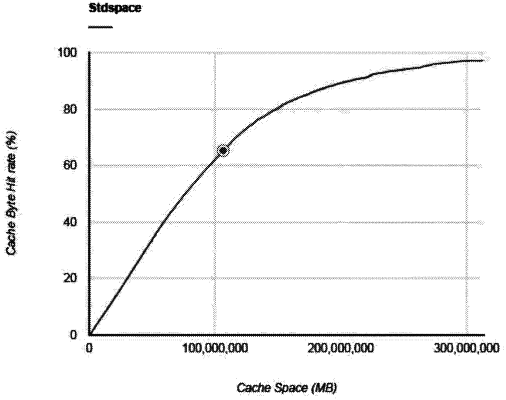| CPC H04N 21/23106 (2013.01) [H04L 9/0643 (2013.01); H04N 21/2183 (2013.01); H04N 21/226 (2013.01); H04N 21/2665 (2013.01)] | 17 Claims |

|
1. A method for analyzing cache utilization in a content delivery network, the method comprising:
with one or more cache servers in the content delivery network, receiving client requests for cacheable objects associated with one or more hostnames associated with a content provider;
associating each cacheable object with a respective point in a range of uniformly distributed points;
generating a first estimate of the number of unique cacheable objects amongst the cacheable objects requested by clients that resulted in cache misses, wherein generating the first estimate comprises: (i) for a first set of cache misses for cacheable objects, determining the respective points in the range that are associated therewith, (ii) calculating the first estimate based on an expectation function relating one of the respective points from (i) to an expected number of uniformly distributed points in the range;
generating a second estimate of the number of unique cacheable objects amongst the cacheable objects requested by clients that resulted in cache misses, wherein generating the second estimate comprises: (iii) for a second set of cache misses for cacheable objects, determining the respective points in the range that are associated therewith, (iv) calculating the second estimate based on an expectation function relating one of the respective points from (iii) to an expected number of uniformly distributed points in the range; and,
merging the first and second estimates to produce a merged estimate indicating the number of unique objects common to the first and second estimates; and,
using the merged estimate to adjust one or more cache server settings.
|